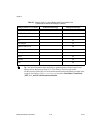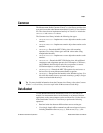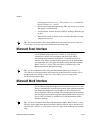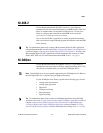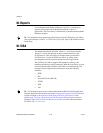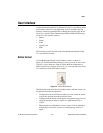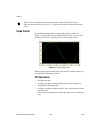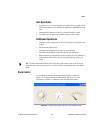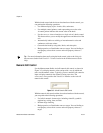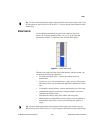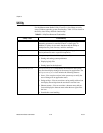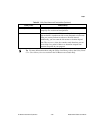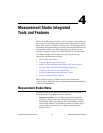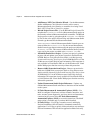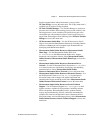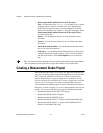
Chapter 3
Measurement Studio User Manual 3-22 ni.com
With the knob control and the classes that interface with the control, you
can perform the following operations:
• Use different display styles—knobs, dials, and meters.
• Use multiple control pointers, each representing one scalar value.
A control pointer indicates the current value of the knob.
•Use the
CNiAxis class to interface to a single axis of a knob control.
This feature allows you to modify the appearance and behavior of the
axis.
• Automatically label axes with log or inverted numeric scales and
continuous or discrete values.
• Customize the knob by using ticks, labels, and value pairs.
• Bind properties to a DataSocket source or target. You use binding to
read property values from a source and write property values to a
target.
Tip For more information about easily using the knob control, refer to the Using the
Measurement Studio Knob Visual C++ Control section in the NI Measurement Studio
Help.
Numeric Edit Control
Use the Measurement Studio ActiveX numeric edit control, as shown in
Figure 3-5, to display numeric values and provide a way by which end
users can edit numeric values. Typically, you use a numeric edit control to
input or display numerical data instead of using a text box. The
CNiNumEdit class provides the Visual C++ interface to the ActiveX
numeric edit control.
Figure 3-5. ActiveX Numeric Edit Control
With the numeric edit control and the classes that interface with the control,
you can perform the following operations:
• Use built-in numeric format styles, including scientific, symbolic
engineering, scaling, time, and date.
• Perform range checking.
• Bind properties to a DataSocket source or target. You use binding to
read property values from a source and write property values to a
target.



